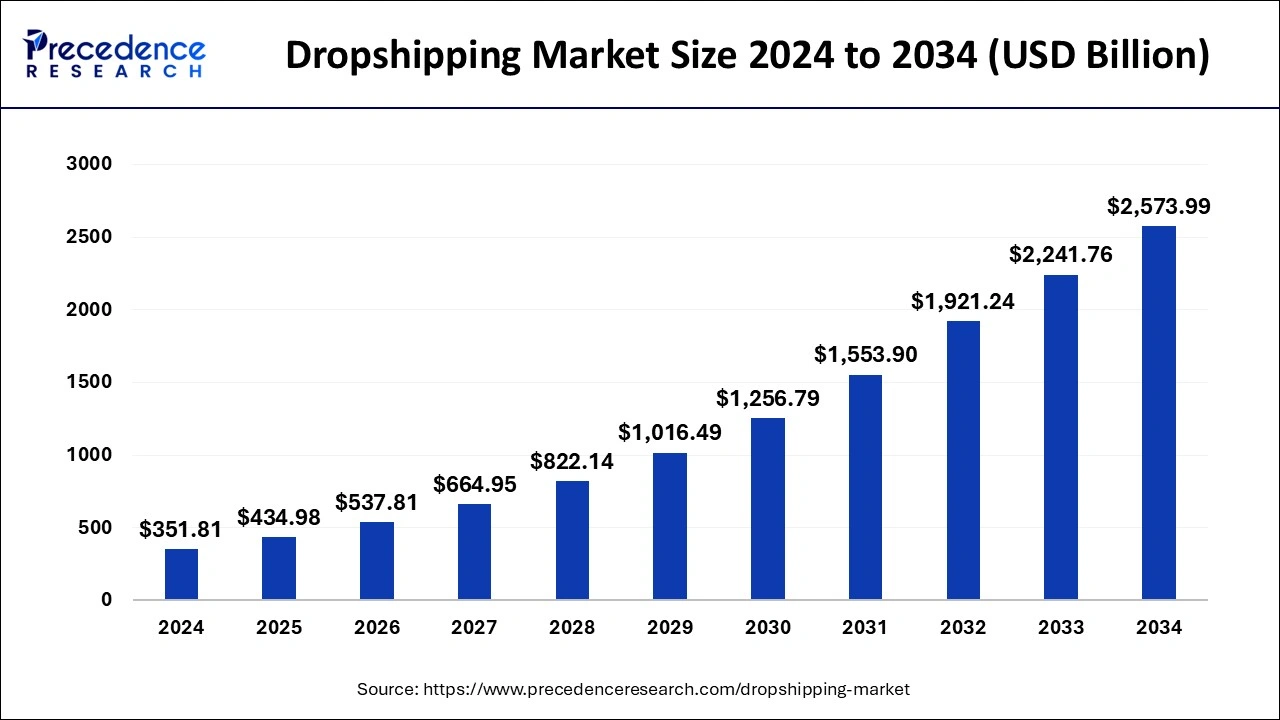The dropshipping landscape has become more competitive over the years. So, to build a successful dropshipping business, you must embrace new strategies that address current market challenges and leverage opportunities.
Here are some strategies that can help build a successful dropshipping business in 2025 and beyond:
1. Niche Focus
Before creating your dropshipping store, you need to decide on your niche. Niche marketing is one of the best ways to stand out in a crowded market.
Instead of selling a wide range of dropshipping products, specialize in a particular category that caters to a specific audience. This allows you to tailor your marketing efforts, create targeted content, and build a loyal customer base.
For example, a store exclusively selling eco-friendly products can attract environmentally conscious consumers willing to pay a premium for sustainable items.
If you're starting a dropshipping business and haven't decided on a niche yet, check out this blog.
2. Quality Suppliers
Partnering with reliable dropshipping suppliers who provide quality products and fast shipping times is essential. In the competitive dropshipping industry, your choice of suppliers can make or break your business.
Finding reputable and reliable suppliers requires thorough research. Here's how you can ensure you're partnering with quality suppliers:
Research and Vet Suppliers: Look for dropshipping suppliers with a solid track record. Read reviews, ask for references, and check their reliability. Platforms like AliExpress, Worldwide Brands, and SaleHoo can be helpful in finding reputable suppliers.
Order Samples: Before listing a product in your store, always order samples to check the product quality. By doing so, you can verify if the products meet your standards and match the descriptions provided by the suppliers.
Evaluate Shipping Times: Fast shipping is crucial for customer satisfaction. Work with suppliers who can offer quick and reliable shipping options. Some suppliers offer expedited shipping methods that can significantly reduce delivery times.
Build Strong Relationships: Establishing a good relationship with your suppliers can lead to better terms, discounts, and faster problem resolution. Regular communication and clear expectations can help maintain a smooth partnership.
Diversify Suppliers: Relying on a single dropshipping supplier can be risky. Diversify your supplier base to avoid disruptions in case of supply chain issues. This also gives you more flexibility in managing stock and ensuring product availability.
3. Customer Experience
Providing an excellent customer experience can set your online store apart from competitors. This includes having a user-friendly website, clear product descriptions, and a smooth checkout process.
Additionally, offering responsive customer support and addressing issues promptly can build trust and encourage repeat business. Personalizing the shopping experience, such as sending thank-you emails or offering discounts for future purchases, can also enhance customer satisfaction.
4. Brand Building
Is dropshipping dead? Well, those who have successfully built a strong brand scream, "DROPSHIPPING IS NOT DEAD!" Keep in mind that developing a unique and recognizable brand can make your online store stand out in a crowded market.
Here's how you can build a strong brand for your own dropshipping business:
Create a Memorable Logo: Your logo is the face of your brand. It should be simple, memorable, and reflective of your store's personality.
Consistent Branding: Use consistent colors, fonts, and design elements across your website and marketing materials. This creates a cohesive look for your eCommerce store that customers can easily recognize.
Clear Messaging: Your brand message should communicate what makes your store unique. Whether it's sustainability, luxury, or affordability, ensure your customers know what you stand for.
Engage on Social Media: Platforms such as Instagram, Facebook, Twitter (now X), and TikTok are excellent for building your brand. Use these platforms to share your story, interact with your audience, and showcase your products creatively.
Content Marketing: Start a blog or create videos that provide value to your customers. This not only helps with SEO but also establishes your store as an authority in your niche.
5. Leveraging Technology
Technology can streamline various aspects of the dropshipping business. Automation tools can help manage inventory, process orders, and handle customer service efficiently. Using these tools can save time and reduce errors, allowing you to focus on growing your business.
Additionally, data analytics can provide insights into customer behavior, helping you make informed decisions about product selection and marketing strategies.
6. Effective Marketing
Marketing is the lifeblood of a successful dropshipping business. With the increased competition in the eCommerce space, effective marketing strategies are more important than ever. So, is dropshipping dead? Not if you can master the art of marketing.
Here are some effective marketing strategies you can implement to increase traffic and sales for your eCommerce store.
Understanding Your Audience
The first step in any marketing strategy is understanding your audience. Who are they? What are their interests and pain points? What motivates them to make a purchase? By answering these questions, you can craft marketing messages that resonate with your target audience.
You can also use tools like Google Analytics and social media insights to gather customer data.
Social Media Marketing
Social media platforms like Facebook, Instagram, TikTok, and Pinterest are powerful tools for reaching potential customers. Here are some tips for leveraging social media:
Create Engaging Content: Post high-quality images and videos that showcase your products. Use stories and live sessions to interact with your audience in real time.
Influencer Collaborations: Partner with influencers in your niche to reach a broader audience. Influencers can provide social proof and boost your brand's credibility.
Paid Advertising: Use Facebook, Instagram, and TikTok Ads to target specific demographics. Paid ads can drive traffic to your store and increase sales.
Email Marketing
Email marketing remains one of the most effective ways to nurture leads and convert them into customers. Building an email list lets you stay in touch with your audience and keep them informed about new products, promotions, and updates.
Search Engine Optimization (SEO)
SEO is crucial for driving organic traffic to your online store. By optimizing your website for search engines, you can improve your rankings and attract more visitors.
Pay-Per-Click (PPC) Advertising
PPC advertising can quickly drive targeted traffic to your store. Platforms like Google Ads and Bing Ads allow you to bid on keywords and display ads to users searching for products like yours.
Content Marketing
Content marketing involves creating and sharing valuable content to attract and engage your target audience. This can include blog posts, videos, infographics, and social media posts. Effective content marketing can establish your brand as an authority in your niche and drive organic traffic to your store.
Retargeting
Retargeting is an effective way to bring back visitors who have shown interest in your products but haven't purchased anything yet. By displaying targeted ads to these visitors as they browse other websites, you can remind them of your products and encourage them to return to your store.









